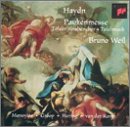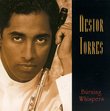| All Artists: Haydn, Weil, Tafelmusik Title: Paukenmesse Members Wishing: 0 Total Copies: 0 Label: Sony Release Date: 8/6/1996 Genre: Classical Styles: Opera & Classical Vocal, Historical Periods, Classical (c.1770-1830) Number of Discs: 1 SwapaCD Credits: 1 UPC: 074646825525 |
Search - Haydn, Weil, Tafelmusik :: Paukenmesse
 | Haydn, Weil, Tafelmusik Paukenmesse Genre: Classical
Haydn's Masses have always been a source of controversy as liturgical music, even as they have enjoyed enormous popularity with singers and audiences since they were first performed in the early years of the 19th century. ... more » |
Larger Image |
CD Details
Synopsis
Amazon.com
Haydn's Masses have always been a source of controversy as liturgical music, even as they have enjoyed enormous popularity with singers and audiences since they were first performed in the early years of the 19th century. This Mass illustrates exactly why. The purpose of religious music, particularly Catholic religious music, is to illustrate and amplify the eternal truths of the texts. Haydn's Mass does just the opposite. Both the title of the Mass and the music--with its menacing drum beats just before the "Dona nobis pacem"--immediately root the religious experience in a specific time and set of circumstances. Musically it's all very exciting, and since we now treat these works as concert music more than anything else, there's no reason not to enjoy Haydn's impressively original and highly personal response to the text, particularly when the performance is as directly communicative as this one. --David Hurwitz
Similar CDs
| Michael Jackson They Don't Care About Us Genres: Pop, R&B Label: Sony | |

 Track Listings (11) - Disc #1
Track Listings (11) - Disc #1
